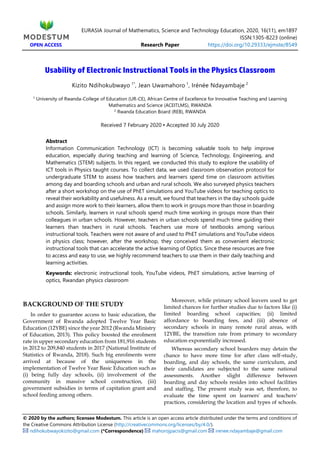This study explored the usability of electronic instructional tools in physics classrooms in Rwanda. Classroom observations were conducted using a protocol to assess how time is spent on activities in day vs boarding schools and urban vs rural schools. The study found that teachers in day schools guide students more and allow more group work, while students in rural schools spend more time working in groups. However, teachers in urban schools provide more guidance. Most teachers currently rely on textbooks. The study also surveyed teachers after a workshop on PhET simulations and YouTube videos for teaching optics. Teachers recognized these tools as convenient for accelerating active learning of optics concepts. Since these resources are freely available and easy to use, the study recommends teachers incorporate them into teaching.









